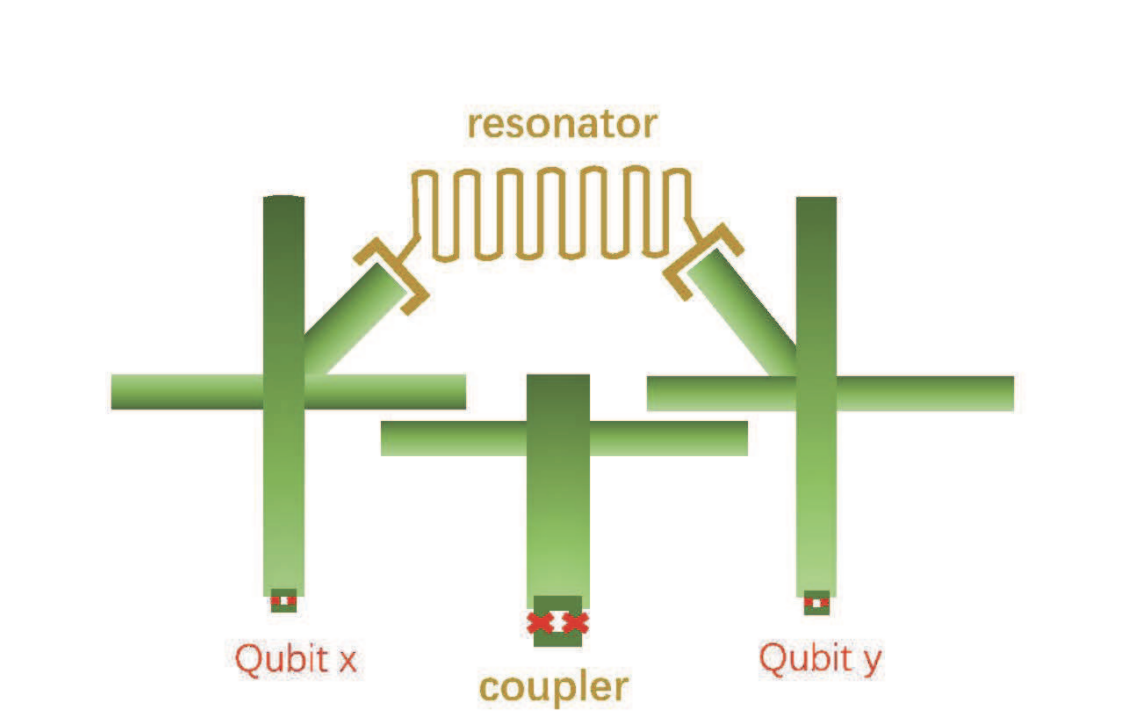Researchers from various Chinese institutions, including the Inspur Artificial Intelligence Research Institute, are studying non-Hermitian qubit-qubit coupling in superconducting quantum circuits. The complex field explores unconventional quantum effects, focusing on energy level degeneracy and quantum state evolution in tunable coupling superconducting quantum circuits.
The study uses a high-loss resonator to supply effective non-Hermitian interactions between two qubits. The research could lead to the development of integrated unidirectional transmission devices. The team’s effective non-Hermitian circuit consists of two Xmon qubits coupling to a common transmon coupler and a high-loss superconducting resonator.
What is Non-Hermitian Qubit-Qubit Coupling in Superconducting Quantum Circuits?
Non-Hermitian qubit-qubit coupling in superconducting quantum circuits is a complex field of study that involves the exploration of unconventional quantum effects. This research is conducted by Hui Wang, YanJun Zhao, and XunWei Xu from various institutions in China, including the Inspur Artificial Intelligence Research Institute, Shandong Yunhai Guochuang Innovative Technology Co Ltd, Beijing University of Technology, and Hunan Normal University.
The study focuses on the energy level degeneracy and quantum state evolution in the tunable coupling superconducting quantum circuit. The qubits’ effective energy levels and damping rates can be continually tuned by the qubit-resonator coupling phase and amplitude, quantum states of qubits, and effective qubit-qubit coupling strength. This allows for control over the positions and numbers of level degenerate points. The efficiency of quantum state exchange and the asymmetry of quantum state evolution can be tuned with non-hermitian and nonreciprocal coupling between two qubits.
How Does Non-Hermitian System Work?
A non-Hermitian system possesses a complex energy spectrum. The real and imaginary parts of this spectrum respectively label the energy levels and loss. The degenerate point of energy levels, known as the exceptional points, contain rich unconventional physical effects. These include the ultra-low driving threshold, chaos, high sensitivity metrology, high-dimensions skin effect, chiral heat transport, and more.
The exceptional point has been studied in various systems such as single ion system, optical microcavity, optomechanical system, magnonic system, hybrid quantum system, and single superconducting qubit. However, it remains challenging to experimentally observe such non-Hermitian in multi-qubits superconducting circuit due to the difficulties in realizing controlled gain and loss.
What is the Role of High-Loss Resonator?
Unlike the efforts to improve the gain and loss of superconducting resonator, this study uses a high-loss resonator to supply the effective non-hermitian interactions between two qubits in tunable coupling superconducting circuit. Using the advantage of easy tuning for superconducting artificial atoms, the energy level degenerate and exceptional points of the non-Hermitian superconducting circuit are controlled by the phases and amplitudes of qubit-resonator coupling, the effective qubit-qubit coupling, and the quantum state of qubits.
How Does Nonreciprocal Coupling Work?
The forward and backward coupling between two qubits are still nonreciprocal in non-Hermitian superconducting circuit. This can be used to develop the integrated unidirectional transmission devices. By preparing one qubit in the excited state and another in the ground states, the free evolution of quantum states under non-Hermite interaction can be tuned with the resonator-qubit coupling phases. Even setting the identical parameters, the evolutions of two qubits quantum states are different from different coupling directions.
What is the Effective Non-Hermitian Circuit?
The effective non-Hermitian circuit is a superconducting circuit consisting of two Xmon qubits coupling to a common transmon coupler and a high-loss superconducting resonator. The transmon coupler and the high-loss resonator can induce the hermite and non-hermite indirect interaction between two qubits. The free Hamiltonian for the superconducting circuit can be written as a function of the resonant frequency of resonator and the corresponding transition frequency of superconducting artificial atoms. The Hamiltonian for the direct qubit-qubit interaction and the interaction between coupler and qubit can also be defined.
Publication details: “Controllable non-Hermitian qubit-qubit Coupling in Superconducting
quantum Circuit”
Publication Date: 2024-04-04
Authors: Hui Wang, Yan-Jun Zhao and Xun-Wei Xu
Source: arXiv (Cornell University)
DOI: https://doi.org/10.48550/arxiv.2404.03397

